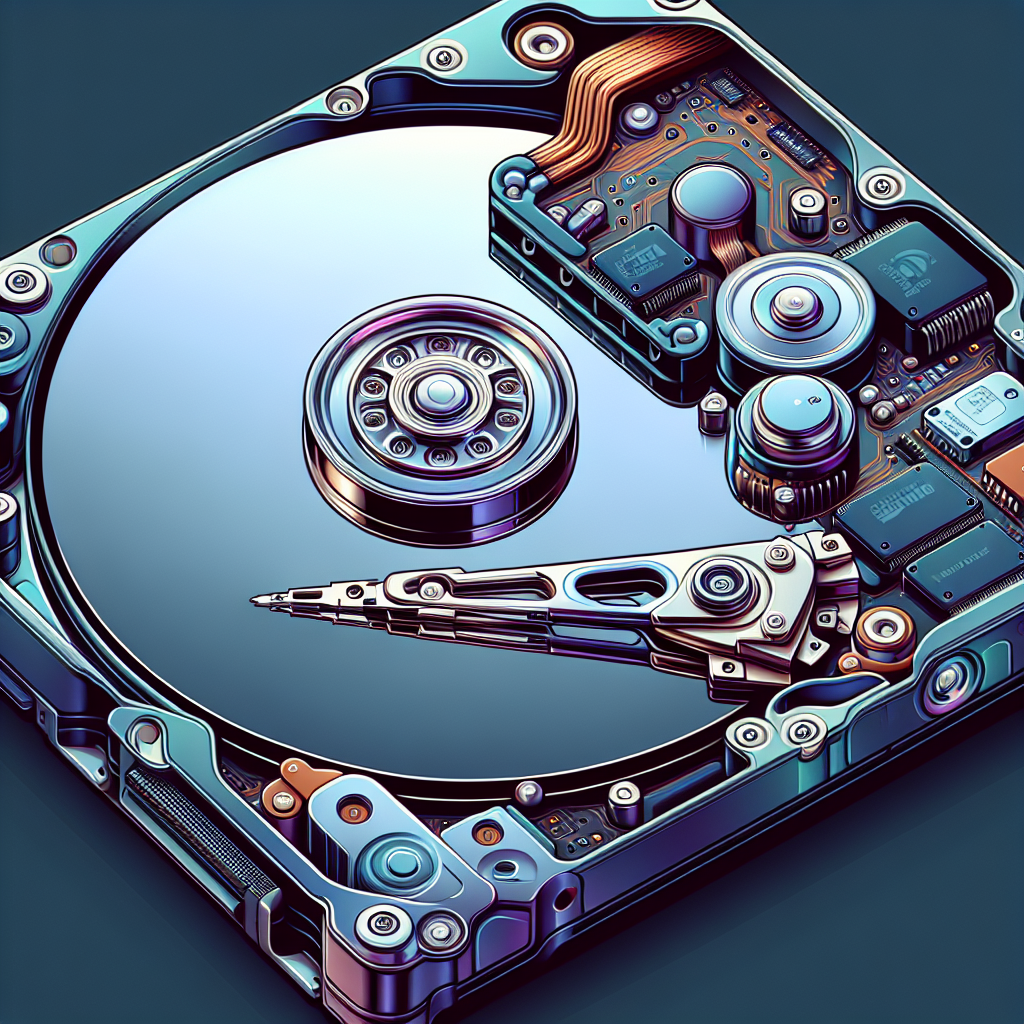Your cart is currently empty!
Understanding the Basics of HDD Technology

Understanding the Basics of HDD Technology
Hard disk drives (HDD) are an essential component of modern computers and storage devices. They store and retrieve digital information using rotating disks coated with a magnetic material. Understanding the basics of HDD technology can help you make informed decisions when purchasing storage devices and maintaining your computer system.
Structure of HDD
HDDs consist of several key components, including the platters, read/write heads, actuator arm, and spindle motor. The platters are circular disks made of glass or aluminum coated with a magnetic material. Data is stored on the platters in the form of magnetic patterns.
The read/write heads are small devices that move over the platters to read and write data. The actuator arm controls the movement of the read/write heads, allowing them to access different areas of the platters. The spindle motor rotates the platters at high speeds, typically between 5,400 and 15,000 revolutions per minute.
Data Storage and Access
HDDs store data using a binary system, where data is represented as a series of ones and zeros. Each platter is divided into tracks, sectors, and clusters, which are used to organize and access data efficiently.
When data is written to an HDD, the read/write heads magnetize the surface of the platters to create the binary patterns. When data is read from the HDD, the read/write heads detect the magnetic patterns and convert them back into digital information.
Accessing data on an HDD involves several steps, including seeking, latency, and transfer rates. Seeking refers to the time it takes for the read/write heads to move to the correct track on the platters. Latency is the delay between the time a request is made to access data and the time the data is actually read. Transfer rates determine how quickly data can be read or written to the HDD.
Advantages and Limitations of HDD
HDDs offer several advantages, including high storage capacity, relatively low cost, and widespread compatibility with different devices. They are also suitable for storing large files and applications that require frequent access.
However, HDDs have limitations, such as slower read/write speeds compared to solid-state drives (SSD), higher susceptibility to physical damage, and mechanical components that can wear out over time. Additionally, HDDs are more prone to data loss in case of physical damage or mechanical failure.
Conclusion
Understanding the basics of HDD technology can help you make informed decisions when choosing storage devices for your computer system. While HDDs offer high storage capacity at a relatively low cost, they have limitations such as slower read/write speeds and mechanical components that can fail over time. Consider your storage needs and budget when choosing between HDDs and SSDs for your computer system.

Leave a Reply